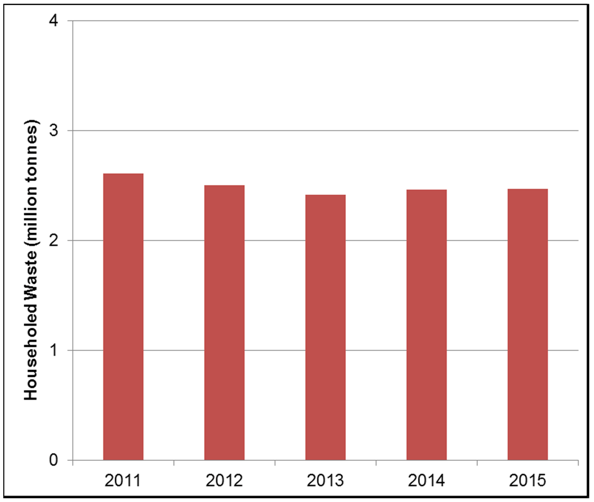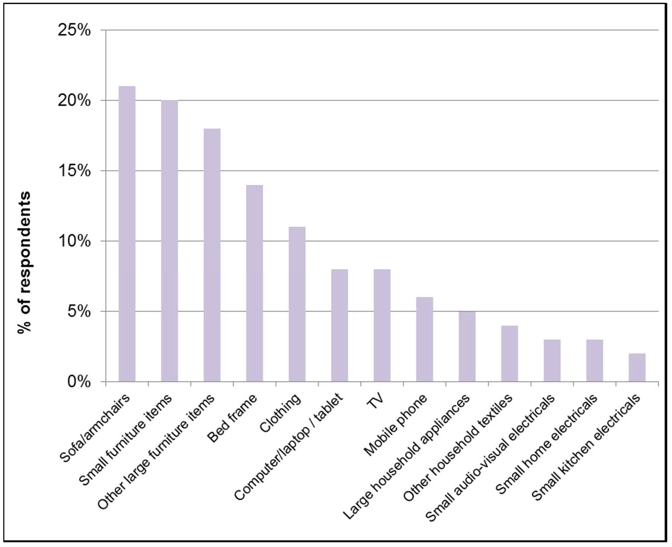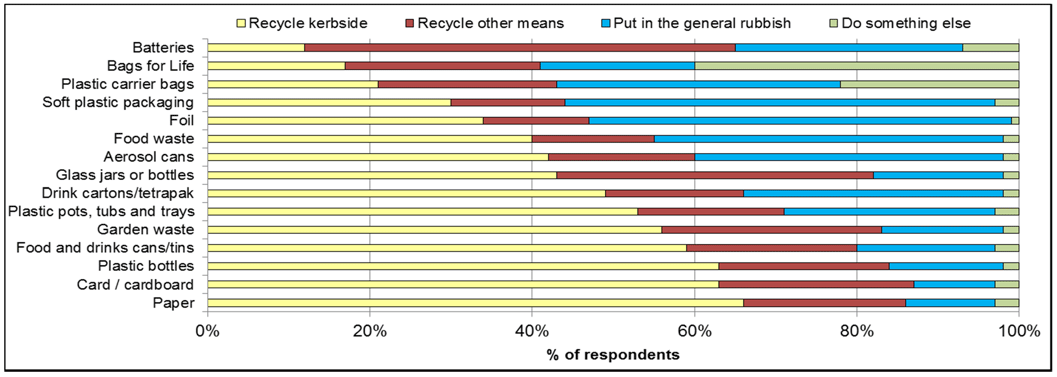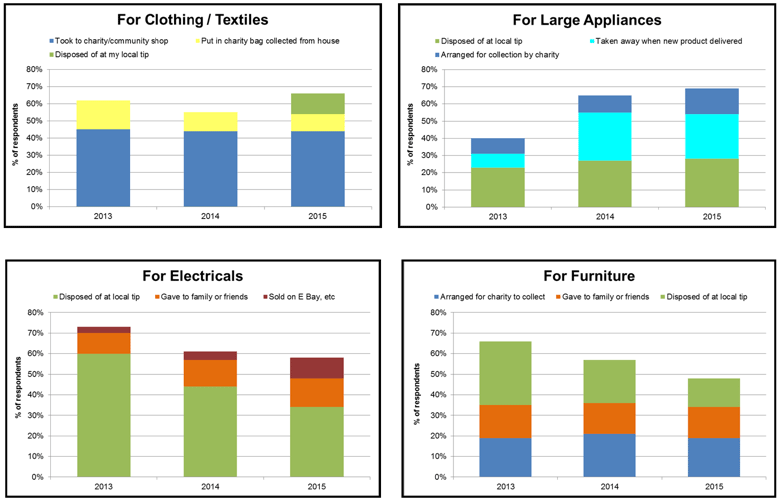Low carbon behaviours framework: key behaviour areas - data for Scotland
Report on the uptake of our 10 low carbon key behaviour areas.
Key Behaviour Areas: Consumption
Consumption
- Reducing, reusing, recycling
Key Behaviour Areas - Consumption: Summary
- Household Waste Generated: there has been progress on the Key Behaviour Indicator for waste. The volume of waste collected by local authorities from private households, or deposited by householders at recycling centres, has fallen by 5% since 2011.
- Reducing consumption: around 1/5 of people buy second hand furniture items, but under 10% of people buy second hand electrical items.
-
Recycling:
- day-to-day materials: card/cardboard and paper are the most frequently recycled items (over 85%). Over 80% of people report that they recycle plastic bottles, garden waste, glass jars/bottles and food and drinks cans/tins. Kerbside recycling behaviours tend to reflect the availability of facilities.
- common household items: donating to charity is the most popular option for clothes and textiles, but disposal at the tip is the most popular option for large appliances and electricals.
Consumption: Context
Consumption: Reducing, Reusing and Recycling
Consumption accounts for around 11% of Scottish households' GHG emissions.*
Consumption emissions can be reduced by:
- Reducing: i.e. preventing waste through purchasing second hand goods and avoiding unnecessary packaging.
- Reusing: giving products a second use and only replacing when necessary.
- Recycling: recovering, and processing materials that would otherwise become waste, into the original or similar products.
Disposal of Waste to landfill is the worst outcome for the environment.
* Scottish Government (2016) Low carbon behaviours framework: method to estimate Scotland's greenhouse gas consumption emissions by theme
Consumption: Key Indicator
Disposal of Waste: Household Waste Generated
Household Waste Generated: 2011 - 2015*

This indicator measures household waste collected by local authorities from private households or deposited by householders at recycling centres.
Since 2011 there has been an overall decrease of 5 per cent in the amount of household waste generated.
A reduction in waste generated could indicate greater resource efficiency and more sustainable consumption behaviour.
*
Scotland Performs National Indicators :
'Reduce Waste Generated',
SEPA
data
NB: prior to 2011, waste was
measured using only Local Authority-Collected Municipal Waste
data.
Consumption: Reducing
Buying second hand household items
Buying second hand goods by item: 2015* (self-reported - people who bought item in the last year)

Furniture items are the most likely to be bought second hand, with around 1 in 5 of people buying these items in the last year choosing this option.
Only a small proportion of people (under 10%) currently buy second hand electrical items.
* Zero Waste Scotland 3Rs Tracker Survey, 2015
Consumption: Recycling
Recycling of day-to-day materials
How people dispose of different items, 2015* (self-reported - last disposal method of those creating waste)

Card/cardboard (87%) and paper (86%) are the most frequently recycled items, with a high proportion recycled kerbside. Over 80% of respondents also recycle plastic bottles, garden waste, glass jars/bottles and food and drinks cans/tins. The figures for kerbside recycling broadly reflect the availability of this service.
Soft plastic packaging (53%) and foil (52%) are currently the items most commonly put in the general rubbish. 43% of people also put food waste in their general rubbish.
* Zero Waste Scotland 3Rs Tracker Survey, 2015
Disposal of common household items
Disposal of common household items, 2013-15*

These charts show different disposal pathways for common household items.
Donating to charity is the most popular option for disposing of clothes and textiles and, at a lower level, furniture.
Disposal at the tip is the most popular option for large appliances and electricals. Potential for reuse and recycling at the tip is site-dependent.
* Zero Waste Scotland 3Rs Tracker Survey (spring data)
Contact
There is a problem
Thanks for your feedback